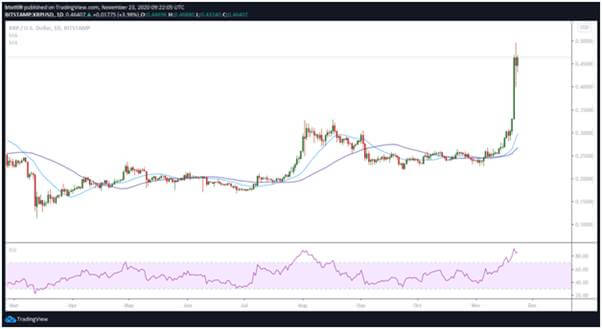您现在的位置是:Assisted reentry: ESA’s satellite likely to fall over Atlantic Ocean on July 28 >>正文
Assisted reentry: ESA’s satellite likely to fall over Atlantic Ocean on July 28
上海品茶网 - 夜上海最新论坛社区 - 上海千花论坛685人已围观
简介By subscribing, you agree to our Terms of Use and Policies You may unsubscribe at any time.The Europ...
By subscribing, you agree to our Terms of Use and Policies You may unsubscribe at any time.
The European Space Agency's (ESA) wind satellite Aeolus will fall back into the Earth on Friday, July 28.

Currently, the space agency is directing the satellite in the first-ever assisted reentry mission. The ESA will “control as much as possible Aeolus’ fall,” mentioned the official release.
The reentry is expected to occur over the Atlantic Ocean. However, the precise position is not confirmed yet.
✅ Checkpoint passed
— esa aeolus mission (@esa_aeolus) July 27, 2023
🟢 Great news, we’re GO for today’s key manoeuvres
🖥️ A series of commands will guide Aeolus down to an altitude of 150 km
📒 Follow the live blog https://t.co/o7WmQsCOlq
🎥 See the key stages in the animation below#ByeByeAeolushttps://t.co/xUx1q0lMhB
The assisted-reentry
The ESA's Space Operations Centre in Germany guides and tracks the satellite's return.
“Aeolus is repeatedly turned, or ‘slewed’ by 180° to switch from the routine orientation (or ‘attitude’), in which the satellite’s ‘X-band’ antenna points toward Earth and the GPS can function to track the mission – crucial to maintaining knowledge of its position – and the ‘retrograde’ attitude,” explained ESA blog.
See Also Related- ESA gears for first-of-its-kind assisted reentry of weather monitoring satellite
This will allow the satellite to turn upside down and use thrusters to reduce its orbit.
Since June 19, the satellite has been falling by around one kilometer per day from its operating orbit height of 320 km.
Aeolus performed its first reentry maneuver on Monday, July 24, which reduced the height to 155 miles (250 kilometers).
#Aeolus reentry: a breakdown
— ESA Operations (@esaoperations) July 26, 2023
Check out this animation showing the key stages in Aeolus' first-of-its-kind assisted reentry.
From 'slews' to thruster burns to satellite commands, this is our plan, happening now, to guide @ESA_Aeolus's descent 🕹️🛰️👇🔥👉https://t.co/ZzbmisQ8jn pic.twitter.com/UsjaSznOCR
Four additional burning maneuvers are expected on Thursday, July 27, which will help to decrease the orbit further.
"A final command [on July 28] will guide Aeolus home from an altitude of 150 km to just 120 km [93 to 75 miles]. Then, the satellite will reenter," mentioned the ESA's live blog.
Reentry will most likely take place over the Atlantic Ocean roughly five hours after the spacecraft receives the last maneuver order.
The exact reentry position is yet to be confirmed
Following the last commands, Aeolus will enter the “passivation” state, where all energy aboard the spacecraft will be turned off. This state may help to avoid the possibility of any "explosions and fragmentation events," which would otherwise result in the release of large chunks of space debris.
Most of this satellite's parts will burn up during the violent atmospheric reentry to Earth, while some will fall into a stretch of the ocean just below the Aeolus's trajectory.
Initially, this satellite was not designed for aided reentry. In recent years, only assisted reentry of rockets over a designated open ocean region has taken place.
If all goes as planned, it will be a significant milestone in spaceflight.
This 3,000-pound (1,360 kilograms) satellite was launched in 2018. The wind monitoring satellite was supposed to last three years, but Aeolus outlived its mission life and orbited our planet for nearly five years.
Tags:
转载:欢迎各位朋友分享到网络,但转载请说明文章出处“上海品茶网 - 夜上海最新论坛社区 - 上海千花论坛”。http://www.jz08.com.cn/news/7955.html
相关文章
The meme coin craze: These 3 coins could make you rich
Assisted reentry: ESA’s satellite likely to fall over Atlantic Ocean on July 28A lot of people have made millions from meme coins. These are crypto assets that have gone from zero...
阅读更多
Here’s where to buy Avalanche now
Assisted reentry: ESA’s satellite likely to fall over Atlantic Ocean on July 28The live Avalanche price today is $119 with a 24-hour trading volume of $2.3 billion. Avalanche is u...
阅读更多
Cryptocurrency exchange FTX opens office in Australia
Assisted reentry: ESA’s satellite likely to fall over Atlantic Ocean on July 28FTX, which is considered one of the fastest-growing crypto exchanges, has opened an office in Austra...
阅读更多
热门文章
- Neural Lab’s air gesture technology could be a game
- Top 3 gaming tokens to buy on December 9: AXS, SAND, and ENJ
- Louisiana ups offshore wind energy with historic approvals
- Binance scraps the quarterly burn mechanism, replaces it with Auto
- Japanese startup plans to vaporize space junk using ground lasers
- COS skyrockets on launch of COS.TV: Best places to buy COS
最新文章
PODCAST: Chatting all things IOTA, with IOTA's Christian Saur
Bread (BRD) Price up 740% today after crypto wallet startup BRD was acquired by Coinbase
Should you buy Convex Finance (CVX)? – price analysis and prediction
Cathie Wood confident about 'spectacular' returns on the Ark Innovation ETF
Walmart CTO: Crypto is ‘important' to how customers transact
Gate.io introduces Gate Pay, a leading crypto